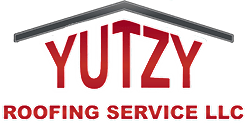Research shows that roof leaks make up around 70% of construction litigation. It also shows that about 40% of building problems are caused by water damage.
Leaky roofs are very common, especially in older roofs. That is why a roof drainage system is important in preserving the integrity of a commercial roof.
Sometimes roofs are not designed in a way that prevents this kind of damage. Other times, the roof may have sustained wear and tear, resulting in leaking.
Keep reading to find out more about choosing the right roof drainage system.
What Does a Roof Drainage System Do?
If your commercial roof does not have a drainage system, you may not know why this is important. Every commercial roof needs to have roofing and drainage installed.
This is a system that forces gravity to move water from the roof, preventing roof leaks. If this system is not in place, water may collect on the roof, resulting in damage.
Things like rot, mold, and structural damage are all important to consider. Low-sloped roofs are often in danger of these things happening due to water damage.
In severe cases, a roof may collapse from the weight of standing water.
Whether you live in a wet climate or not, this is important for your building. Leaks can often be prevented if you act quickly by having drainage installed.
Gutters
The most common type of roof drainage design is gutters. This may not be suitable for every type of roof, but it is something worth looking into.
A gutter is composed of a pipe-like structure connected to the edge of the roof. This usually goes around the entire roof edge to collect water.
Water flows into the gutter, and the gutter redirects it to the ground. This helps to keep standing water from collecting on the roof and causing structural damage.
This can also be helpful in removing small debris like leaves and sticks.
Internal Drains
Another option you can choose is interior drainage. This is where several drains are spaced over the surface of the roof, often near the center.
Water often collects towards the center of the roof, creating a lot of risks. If this is something that happens to your commercial roof, internal drains can be helpful.
Each drain is connected to pipes or gutters that are beneath the surface of the roof. These work like any typical gutters, by redirecting the water onto the ground where it won’t cause damage.
Many people prefer this roof drainage system because it is invisible to the naked eye. Each drain also has protective screens or strainers to prevent debris from entering the system and clogging it.
Scuppers
A very old method of removing water is the use of scuppers. This involves creating an opening in the side wall of the building at the same level as the surface of the roof.
This is typically used for flat roofs that have a parapet or perimeter wall surrounding them. This helps water to drain off of the roof so that it does not create damage.
Tapered Insulation
For commercial roofs that don’t have much of a slope, tapered insulation can help. This is a way to create more of a slope without having to make major structural changes.
Tapered insulation can be installed on the surface of the roof and panels. These panels fit together to create a slope on the roof that naturally redirects the water.
Another benefit to this option is that it adds an added layer of protection to the roof. This added level of protection can help the roof to sustain less wear and tear.
Overflow Drain
A very common commercial roof option is an overflow drain. This is also called a secondary roof drain that is a backup or a failsafe for the roof.
This has a 2-inch water dam connected to it that allows the water on the roof to collect. Once the water reaches 2 inches in depth, the overflow drain starts to do its job.
Having an overflow roof drain is a plumbing code requirement for most commercial buildings. It helps roofs to not cave in from the weight of standing water that isn’t draining.
Keep in mind that this should not be the only roof drainage system you have. Every commercial roof should have this as well as a main drainage system.
You may need to regularly check these overflow drains to make sure they aren’t clogged with debris.
Siphonic Drainage Systems
A popular commercial building system is a siphonic drainage system. This system uses a gravity-induced vacuum pump that removes the water.
Siphonic roof drainage uses hydroponic pressure that draws the water away from the surface of the roof. This works very quickly and does not require an electrical pump.
You will commonly find these drainage systems on large roofs. Specifically, roofs that are in climates where heavy rain is common.
Because this drainage system works quickly, it is ideal for large volumes of water at a time. This kind of weather could easily back up other drainage systems.
Roof Drainage System Tips
If your commercial roof doesn’t have a roof drainage system, this is a problem. Commercial roofs are at a higher risk of developing leaks, which lead to a variety of problems.
That is why it is important to do your research and pick the right drainage system.
Do you need your roof restored or repaired? Contact us today at YUTZY Roofing Service LLC to get a free quote on your commercial roof.
